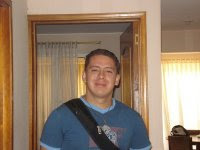
The traditional Navajo life has remained very strong throughout the history of the tribe until our time it is for this reason that there are more similarities than differences between the rituals of ancient Navajo tribe and the current Navajo tribe.
The main similarity occur when one of the members of the tribe gets sick, because as in the past the sick person receive traditional medicine from a man who is called Hataali, the ritual of healing attending the family of the sick person and some dancers who wear masks and costumes with which they sing and dance around Hataali while that the sick person takes a shower with medicinal plants. Also at the time in which a girl reaches her age fertile, she receive a celebration with an ancient ritual dances that can last three days and that was practiced a long time. On the other hand one of the best preserved rituals it is the teaching of their beliefs that takes place in early spring and consists of a series of chants at night with the presence of all the families of the reserve.
However, the evolution of the world contributed to the existence of some differences between old and modern rituals, an example of these differences is the disappearance of the ritual cleansing of the soul and body as in the past the man who came from the War had a special ritual, in which the Hataali painted the body of men who came of the battles whit de objective of absorb the blood of the dead, but because in this tribe has no battles with anyone in this ritual missing.
In conclusion Navajo although the tribe has maintained many of their rites there are some who have disappeared due to the evolution of civilization.

 The aim of this essay is show the most representative aspects of Navajo Members in order to analyze the similarities and differences founded between two people considered heores by their tribe. In spite of the amount of differences their lives had they managed to find a way of succeed and help others.
The aim of this essay is show the most representative aspects of Navajo Members in order to analyze the similarities and differences founded between two people considered heores by their tribe. In spite of the amount of differences their lives had they managed to find a way of succeed and help others.


